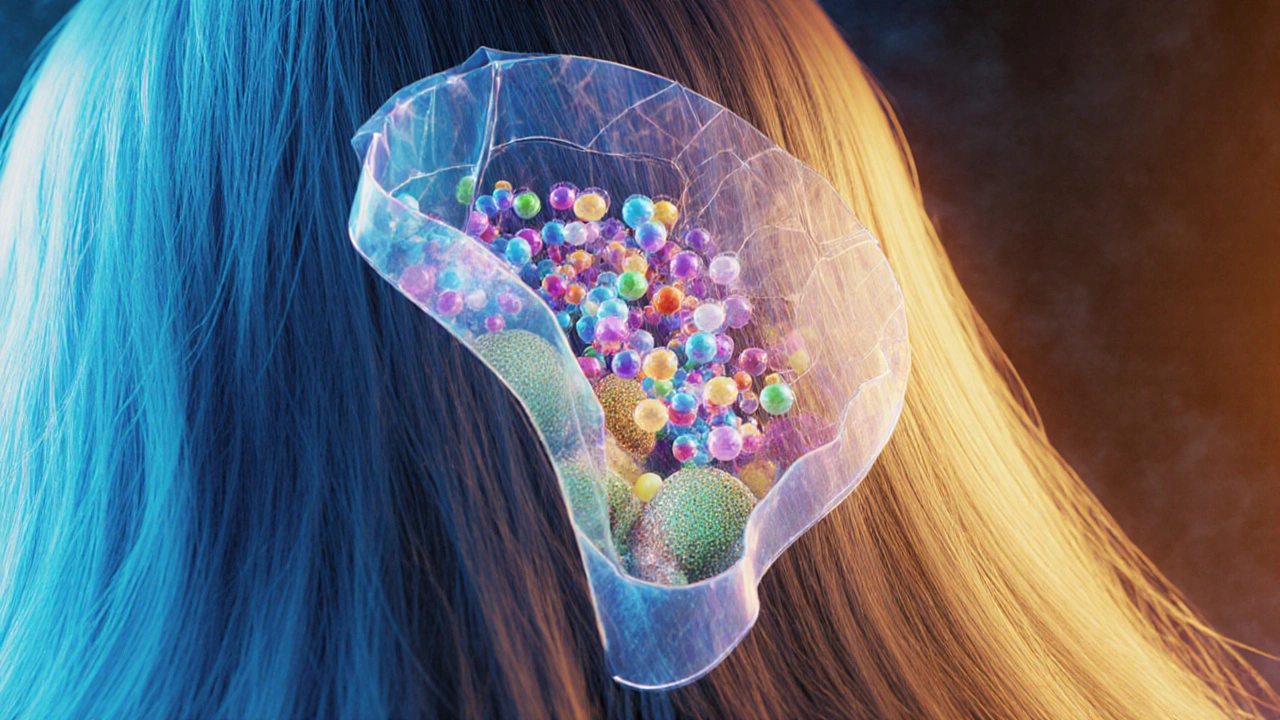When you apply hair color, it’s not just sitting on top—it’s hair color penetration, the process by which dye molecules enter the hair shaft to change its color. This isn’t magic. It’s chemistry. And if you don’t understand how it works, you might be damaging your hair without even knowing it. Most commercial dyes use ammonia or peroxide to open the hair cuticle, letting pigment sink in. But that same process strips natural oils, weakens structure, and can leave hair brittle over time. That’s why so many people with Indian hair or sensitive scalps end up with irritation, breakage, or uneven color—they’re using formulas designed for thick, untreated hair, not theirs.
natural hair dye, like henna or plant-based pigments works differently. Instead of forcing open the cuticle, it coats or slowly deposits color on the surface. It doesn’t penetrate as deeply, which means less damage—but also less dramatic change. That’s why people who want full grey coverage often struggle with henna. It’s not failing; it’s just not meant to lift or bleach. Meanwhile, hair dye chemistry, the science behind how pigments bond with hair proteins explains why some colors fade faster, why reds look brassy, and why mixing dye with conditioner can ruin your results unless you’re using the right type.
What you’re really choosing isn’t just a shade—it’s a trade-off. Deep penetration gives you bold, long-lasting color but risks your hair’s health. Surface-level color is gentler but needs more frequent touch-ups. And if you’ve ever had your hair turn grey after a brown box dye? That’s not the dye’s fault—it’s your scalp reacting to PPD, a common chemical that triggers inflammation, making the color look off. You don’t need to accept that. There are safer options, like ammonia-free dyes and low-peroxide formulas, that still give good coverage without the burn.
What you’ll find in the posts below isn’t just a list of products. It’s a real look at what works for different hair types, skin sensitivities, and goals. You’ll see how honey wax and henna are both natural, but for totally different reasons. You’ll learn why mixing dye with conditioner sometimes helps and sometimes ruins everything. You’ll find out why older women are walking away from harsh dyes—and what they’re using instead. And you’ll see how the same principle of penetration applies whether you’re coloring your hair, waxing your brows, or trying to grow back overplucked strands.

Ammonia in hair dye opens the hair cuticle to let color penetrate deeply, making it essential for permanent, high-lift results. But it's not the only option - ammonia-free formulas exist, with trade-offs in coverage and longevity.